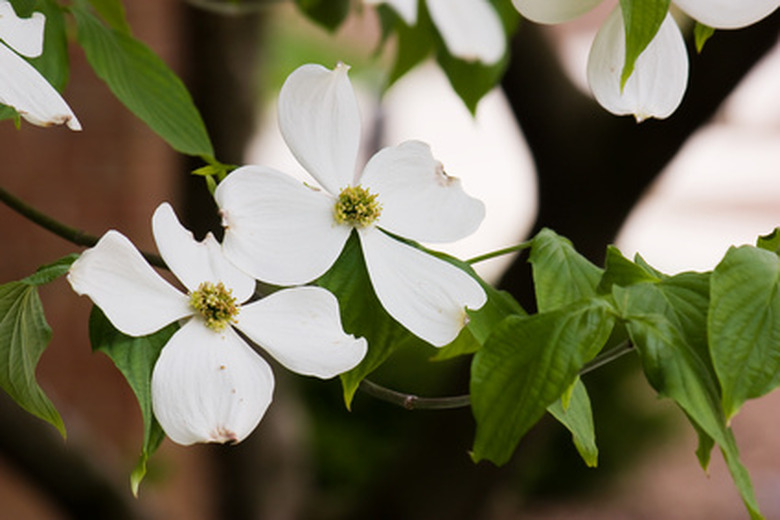How To Care For Dogwood Trees In Florida
We may receive a commission on purchases made from links.
Regardless of whether you live in the northern regions of the state of Florida or the warmer south, a species of dogwood (Cornus spp.) tolerates your area's growing conditions. Dogwoods fill the landscape with their clusters of flowers and are well suited as specimen trees and have the extra benefit of attracting butterflies, beneficial insects and birds.
The Flowering Dogwood
The Flowering Dogwood
Flowering dogwood (Cornus florida) grows well throughout the northern and central regions of Florida located within U.S. Department of Agriculture hardiness zones 5 through 9. The native tree has a rounded shape and is deciduous, with foliage changing to bright red in fall.
Springtime fills the tree's canopy with white or pink flowers with clusters of red fruits following the blooming stage. Birds and small mammals use the berries as food. The tree works well used in backgrounds, as a specimen or planted under larger trees such as oaks.
These trees grow best in a partial shade environment, growing up to 30 feet in height with a 20-foot spread at maturity. Flowering dogwood prefers growing on rich, well-draining soils that are moist, so regular watering benefits the tree's growth and flowering.
Gardeners should plant trees where they receive good air circulation to cut down on diseases. 'Appalachian Spring' is a cultivar with superior disease resistance to anthracnose, growing up to 20 feet tall. Flowers are white with yellow centers, and the deciduous leaves change to vibrant red and purple in fall.
The English Dogwood
The English Dogwood
English dogwood (Philadelphus indorus), also called mock orange, is not a true dogwood from the Cornus genus. It's a native plant that grows well in North Florida areas located in USDA hardiness zones 5 through 10. Plants are trainable as smallish trees through pruning. Left in their natural state, the trees grow as large shrubs.
English dogwood trees have dark green, glossy, heart-like deciduous foliage; in spring, white, four-petal flowers with yellow centers bloom. This type of mock dogwood works well used as a specimen, in backdrops or in mixed perennial gardens.
These trees grow relatively fast, reaching mature heights of up to 12 feet with a spreading habit of up to 10 feet. English dogwood grows in a variety of well-drained soils and has a high tolerance to drought, heat and humid conditions. The plants tolerate full sun to partial shade conditions.
The Swamp Dogwood
The Swamp Dogwood
Swamp dogwood (Cornus foemina), also called stiff dogwood, grows well throughout most of Florida. It's a perennial in USDA hardiness zones 5 through 9. Its natural habit is to grow as a large shrub, but it can be pruned and trained to grow as a smallish tree. The tree fills with clusters of white, four-petaled flowers in springtime. Berry-like fruits, which various birds use as a food source, follow the flowering phase. The spring azure butterfly uses the dogwood as a host plant for its larva.
Swamp dogwood grows at a medium rate of speed, reaching a mature height and spread of 10 to 16 feet. This native grows in sun to partial shade. Its low tolerance to drought and salt spray make it an unsuitable choice for gardeners living directly along the coast. Plants grow best when given regular water applications, and applying several inches of mulch over the planting site helps the soil retain moisture.
